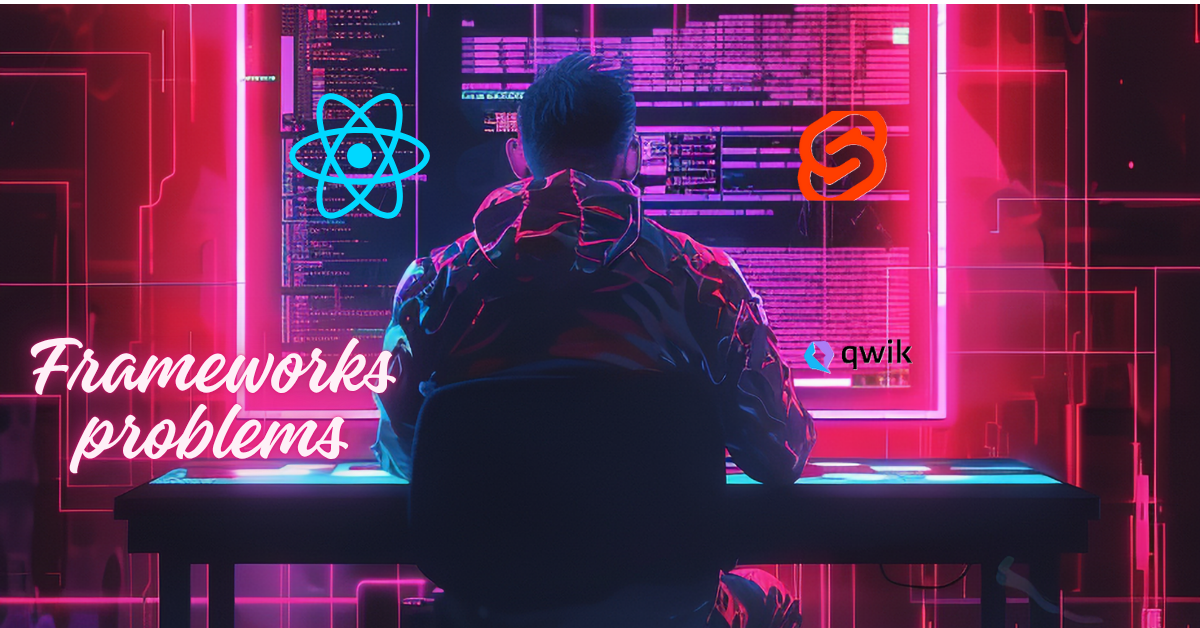How Lightweight Frameworks Are Creating Heavy Problems in 2025

Table of Contents
Introduction
In the race for speed, performance, and simplicity, developers are embracing “lightweight” frontend frameworks at an unprecedented pace. Tools like Svelte, Qwik, Alpine.js, and SolidJS are hailed as the next evolution of web development—but what if the very thing we consider an upgrade is slowly undermining our long-term goals?
Welcome to the paradox of 2025: where “lightweight” might actually weigh more than we think.
🌪️ The Rise of Ultra-Light Frameworks
In recent years, frameworks have been shifting toward minimalism:
- Svelte: ships zero runtime
- Qwik: focuses on resumability
- Alpine.js: jQuery-like but reactive
- SolidJS: fine-grained reactivity with minimal overhead
While the benefits are undeniable—small bundle sizes, quick Time to Interactive (TTI), and simplified logic—the context in which they’re used is where trouble begins.
🧨 When Lightweight Becomes Fragile
Many devs discover too late that these ultra-slim frameworks:
- Break at scale: Simple apps? Great. Enterprise-grade complexity? Not so much.
- Have limited ecosystem support: The smaller the community, the slower the fixes.
- Struggle with SSR or hydration (in some cases): leading to SEO nightmares and hydration errors.
- Cause debugging fatigue: The reactivity model may be lean, but it’s often difficult to trace bugs in reactive pipelines.
Lightweight frameworks optimize for speed—not durability.
⚖️ Frameworks vs. Developer Experience
Here’s what teams are now facing in 2025:
| Aspect | Lightweight Frameworks | Established Frameworks |
|---|---|---|
| Community Support | Niche, fragmented | Mature, large, robust |
| Debugging Tools | Limited | Extensive |
| Onboarding Curve | Steep for non-experts | Easier via abundant docs |
| Flexibility | High | Moderate |
| Ecosystem Compatibility | Often limited | Broad & integrated |
While the speed may win you a Google Lighthouse badge, developer burnout is a real price.
🎭 The Performance Illusion
Just because your TTI is low doesn’t mean your user experience is better. Lightweight frameworks often ignore:
- Accessibility shortcuts
- Progressive enhancement
- Dynamic loading complexities
- Third-party script bottlenecks (ads, analytics, etc.)
“Shaving off 20ms won’t matter if your app crashes under load.”
🔍 The SEO & Indexability Problem
JavaScript-heavy lightweight apps sometimes result in:
- Poor indexing
- Inconsistent metadata rendering
- Slower content visibility
Frameworks like React and Vue have mature SSR strategies via Next.js and Nuxt. Lightweight frameworks, although catching up, often require handcrafted SSR, increasing dev complexity.
💸 Hidden Cost in Dev Hiring
You’re trying to hire a Svelte + Astro + Qwik dev in 2025?
Good luck.
- Most developers still train in React, Angular, or Vue.
- The demand-supply gap for “lightweight stack” developers has increased dev costs.
- Internal training = added overhead.
So while you’re saving kilobytes, you’re spending dollars.
🔄 When Teams Are Rolling Back
Some teams are already moving back to stable, slightly heavier stacks.
Why?
- Predictable behavior
- Rich dev tooling
- Mature CI/CD integrations
- Stability over minimalism
As one dev wrote on Hacker News:
“We moved from Qwik back to React + Next.js. Speed wasn’t worth the chaos.”
🧠 The Bigger Picture: Balance Over Bragging Rights
Being lightweight doesn’t mean being better. It’s about trade-offs. Here’s what you should ask before adopting a “slim” stack:
- Will this scale with our product?
- Can we hire talent for this stack?
- Are we trading DX for vanity metrics?
- Can this integrate with our backend or API requirements?
In 2025, framework performance isn’t a race—it’s a tightrope walk.
✅ When to Use Lightweight Frameworks (Safely)
Use them if:
- You’re building micro-frontends
- You need one-off landing pages
- Performance budgets are strict
- SEO isn’t a top priority
Avoid them if:
- You need SSR or dynamic routing
- Your project will scale in size or team
- You prioritize long-term maintainability
🧠 Final Thoughts
Lightweight frameworks are a blessing—but only when used in the right context. They aren’t the silver bullet for every use case, and blindly following trends in 2025 can hurt more than help.
Don’t let the byte count blind you.
❓ FAQs
Q1: What is a lightweight framework in frontend development?
A lightweight framework is one with minimal runtime and smaller bundle sizes, optimized for speed and simplicity.
Q2: Are lightweight frameworks better for SEO?
Not always. Without proper SSR setup, many lightweight frameworks struggle with indexability.
Q3: Why do lightweight frameworks fail at scale?
They often lack robust state management, SSR, or plugin ecosystems needed for large applications.
Q4: Should I still use React or Vue in 2025?
Yes—especially for enterprise-scale apps or when team experience and ecosystem maturity matter more than minimal load times.
Q5: What’s the biggest drawback of using tools like Qwik or Alpine.js?
Limited ecosystem and dev support, which can result in high maintenance and slower debugging.
👤 Author Box :
Author: Abdul Rehman Khan
Abdul Rehman Khan is the founder of Dev Tech Insights and Dark Tech Insights. With over 2 years of experience in programming and blogging, he is passionate about exposing the hidden truths of the tech industry. His writing blends curiosity, critique, and a love for uncovering what lies beneath the surface of modern development.
If you want lighter version with benefits and more details about lightweight frontend frameworks then visit
